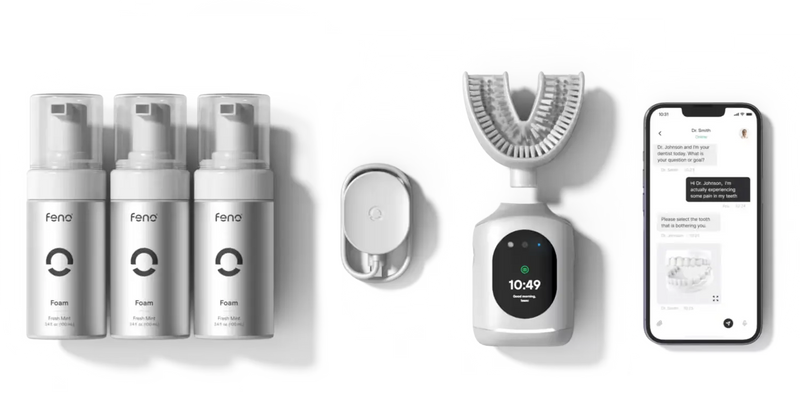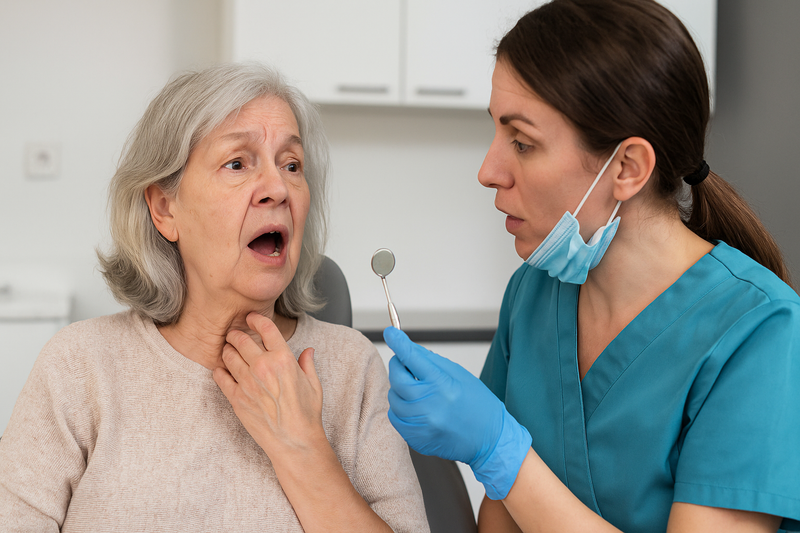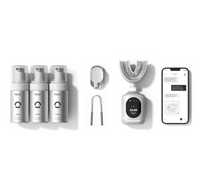
The Hidden Link Between Oral Health and Major Diseases: Why Saliva Testing is Critical
Essential Takeaways
- Saliva testing is a game-changer in the fight against gum disease and its related health risks. This simple, noninvasive test provides valuable insights that help protect your oral health and, by extension, your overall well-being. Early detection through saliva testing ensures that patients can address issues before they lead to more serious conditions, while regular retesting helps monitor the success of treatment, keeping both your smile and your health intact.
Did you know that up to 90% of the population (Eke, 2012) has some form of gum disease? What’s even more concerning is that gum disease is not just a threat to your oral health—it’s linked to serious systemic conditions such as heart disease, strokes, and even Alzheimer’s (Lockhart, 2012; Ide, 2016). Early detection through noninvasive testing, particularly saliva collection, is an essential step in preventing these conditions.
The Power of Saliva Testing
Saliva testing is a simple, noninvasive method that offers significant insights into your oral and overall health. By collecting just 1mL of saliva, it’s possible to detect harmful bacteria that can cause gum disease and lead to systemic health issues (Herrera, 2020). This type of testing uses a patented preservation solution that freezes the activity of pathogens, providing the most accurate understanding of a patient’s disease state.
Unlike traditional methods like probing or visual examinations, saliva testing goes deeper, detecting bacteria that may be hidden in the mouth but still pose a serious threat. This early detection allows healthcare providers to intervene before the disease progresses.

Why Gum Disease is a Serious Health Risk
Gum disease begins with inflammation in the gums, but it doesn’t stop there. Left untreated, it can progress to periodontitis, where the bone and tissue supporting the teeth are damaged. But the threat goes beyond the mouth—oral bacteria can enter the bloodstream, causing widespread health problems.
Here are some of the most concerning risks:
- Heart Attacks and Strokes: Oral bacteria can travel to the heart, triggering inflammation and plaque buildup. Up to 50% of heart attacks and strokes are linked to these bacteria (Lockhart, 2012).
- Alzheimer’s Disease: Long-term gum disease increases the risk of developing Alzheimer’s by 70%, as harmful bacteria reach the brain (Ide, 2016) and contribute to neurodegeneration.
- Cancer Risk: Research shows a 50% higher risk of cancers, including oral and pancreatic cancers (Ahn, 2012), in those with gum disease
- Diabetes: Gum disease complicates blood sugar control, affecting 95% of diabetes patients and worsening overall health (Taylor, 2005).
How Saliva Testing Works
Testing is simple and effective, with four key steps:
- Collect 1mL of saliva from the patient.
- The sample is placed in a postage-paid box and sent to the lab.
- Evaluate actionable clinical insights based on the results, and determine next steps, which may involve collaborative treatment plans with other healthcare providers.
- Retest to monitor successful outcomes and ensure that the treatment is effectively managing the patient’s condition.
This process identifies the specific bacterial strains present in the mouth, providing healthcare providers with critical insights into the patient’s oral and systemic health risks. This enables them to create personalized treatment plans to address not only oral health but also potential systemic issues.

The Role of Candida Albicans in Oral Disease
When certain pathogens are present in the mouth, they accelerate the progression of oral diseases. One such pathogen, Candida Albicans, can quickly worsen gum disease. Detecting its presence early through saliva testing helps patients and practitioners take targeted action to prevent further complications (Noble, 2017).
Why Early Detection Matters
Saliva testing offers more than just a snapshot of your oral health. It’s a proactive step toward preventing serious conditions before they arise. By identifying harmful bacteria early, patients can receive the right treatments to stop the progression of gum disease and reduce the risk of associated health problems. Regular retesting also ensures that the treatment plan is effective and can be adjusted as needed (Herrera, 2020).

Feno Founders Edition Bundle
Advanced Oral Health in 20 Seconds with the Feno Smartbrush™
Get Yours Now!References
Photo Reference
Peg Rosen
Periodontal disease, oral hygiene, and pancreatic cancer risk.
Ahn, J., Segers, S., Hayes, R. B. (2012)
Prevalence of periodontitis in adults in the United States: 2009 and 2010. Journal of Periodontology
Eke, P. I., Dye, B. A., Wei, L., Thornton-Evans, G. O., & Genco, R. J. (2012)
Local and systemic implications of periodontal diseases. Journal of Clinical Periodontology
Herrera, D., Matesanz, P., Bascones-Martinez, A., Sanz, M. (2020)
Periodontitis and cognitive decline in Alzheimer's disease. Journal of Alzheimer's Disease
Ide, M., Harris, M., Stevens, A., Sussams, R., Hopkins, V., Culliford, D., et al. (2016)
Periodontal disease and atherosclerotic vascular disease: Does the evidence support an independent association?
Lockhart, P. B., Bolger, A. F., Papapanou, P. N., Osinbowale, O., Trevisan, M., Levison, M. E., & Taubert, K. A. (2012)
Candida albicans: Cellular and molecular biology. Clinical Microbiology Reviews
Noble, S. M., Gianella, R. A., Silverman, N. (2017)
Periodontal disease: Associations with diabetes, glycemic control and complications.
Taylor, G. W., Borgnakke, W. S. (2005)






